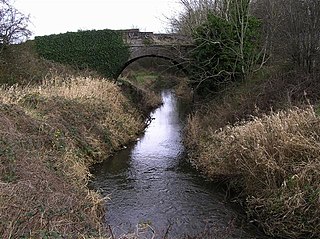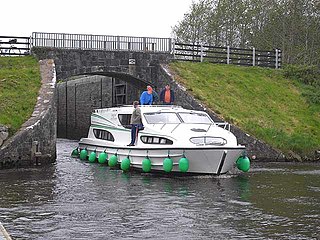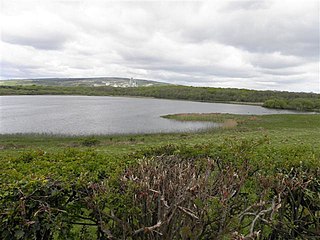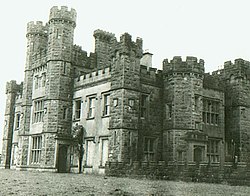
County Fermanagh is one of the thirty-two counties of Ireland, one of the nine counties of Ulster and one of six counties of Northern Ireland.

County Monaghan is a county in Ireland. It is in the province of Ulster and is part of Border strategic planning area of the Northern and Western Region. It is named after the town of Monaghan. Monaghan County Council is the local authority for the county. The population of the county was 65,288 according to the 2022 census.

County Cavan is a county in Ireland. It is in the province of Ulster and is part of the Northern and Western Region. It is named after the town of Cavan and is based on the historic Gaelic territory of East Breffny (Bréifne). Cavan County Council is the local authority for the county, which had a population of 81,704 at the 2022 census.

Clones is a small town in the west of County Monaghan in Ireland. The area is part of the Border Region in the Republic of Ireland, earmarked for economic development by the Irish Government due to its currently below-average economic situation. The town was badly hit economically by the Partition of Ireland in 1921 because of its location on the border with County Fermanagh in Northern Ireland. The creation of the Irish border deprived it of access to a large part of its economic hinterland for many years. The town had a population of 1,680 at the 2016 census. The town is in a civil parish of the same name.

Lough Erne is the name of two connected lakes in County Fermanagh, Northern Ireland. It is the second-biggest lake system in Northern Ireland and Ulster, and the fourth biggest in Ireland. The lakes are widened sections of the River Erne, which flows north and then curves west into the Atlantic. The smaller southern lake is called the Upper Lough as it is higher up the river. The bigger northern lake is called the Lower Lough or Broad Lough. The town of Enniskillen lies on the short stretch of river between the lakes. The lake has more than 150 islands, along with many coves and inlets. The River Erne is 80 miles (129 km) long and drains an area of about 1,680 square miles (4,350 km2).

Derrylin is a village and townland in County Fermanagh, Northern Ireland. It is on the A509 road between Enniskillen and the border with County Cavan. It had a population of 634 in the 2011 census and is situated within Fermanagh and Omagh district.

The River Erne in the northwest of the island of Ireland, is the second-longest river in Ulster, flowing through Northern Ireland and the Republic of Ireland, and forming part of their border.
Breffni Park, known for sponsorship reasons as Kingspan Breffni, is a GAA stadium in Cavan, Ireland. It is the home of Cavan GAA. The ground has an overall capacity of about 25,030 with a 5,030 seated capacity. Breffni is the historic name for the area of counties Cavan and Leitrim. Cavan is often referred to as the Breffni County. Kingspan Breffni is located on Park Lane to the south of Cavan town. Breffni Park hosted the first test in the 2006 Ladies' International Rules Series between Ireland and Australia. It also hosted the first test during the 2013 International Rules Series.
The Battle of Newtownbutler took place near Enniskillen in County Fermanagh, Ireland, in 1689 and was part of the Williamite War in Ireland between the forces of William III and Mary II and those of King James II.

Ballyconnell is a town in County Cavan, Ireland. It is situated on the N87 national secondary road at the junction of four townlands: Annagh, Cullyleenan, Doon (Tomregan) and Derryginny in the parish of Tomregan, Barony of Tullyhaw.

Ederney is a village situated primarily in the townlands of Drumkeen and of Ederny in County Fermanagh, Northern Ireland.

Scouting in Northern Ireland is represented by three Scouting associations:
Newtownbutler or Newtown Butler is a small town in County Fermanagh, Northern Ireland. It is in the southeast corner of the county, near Lough Erne, the border with County Monaghan, Republic of Ireland, and the town of Clones. It is surrounded by small lakes and bogland. In the 2011 census it had a population of 989 people.

The Ulster Canal is a canal running through part of County Armagh, County Tyrone and County Fermanagh in Northern Ireland and County Monaghan in the Republic of Ireland. The Ulster Canal was built between 1825 and 1842 and was 74 km (46 mi) long with 26 locks. It ran from Charlemont on the River Blackwater to near Wattlebridge on the Finn River, south-east of Upper Lough Erne. It was an ill-considered venture, with the locks built narrower than the other Irish waterways, preventing through trade, and an inadequate water supply. It was an abject failure commercially, and contributed to the collapse of the Lagan Navigation Company, who took it over from the government but were then refused permission to abandon it when they could not afford the maintenance costs. It finally closed in 1931. Waterways Ireland started work on rebuilding the canal at its southern end in 2015.

The Shannon–Erne Waterway is a canal linking the River Shannon in the Republic of Ireland with the River Erne in Northern Ireland. Managed by Waterways Ireland, the canal is 63 km (39 mi) in length, has sixteen locks and runs from Leitrim village in County Leitrim to Upper Lough Erne in County Fermanagh.
Crom Castle is a country house on the shores of Upper Lough Erne in County Fermanagh, Northern Ireland, the seat of the Earls Erne. Standing within the 1,900-acre (7.7 km2) Crom Estate, and within a formal garden, the castle is built in stone. A central battlemented tower includes the main entrance, and there are also smaller towers to one side. It stands apart from the ruins of Old Crom Castle, of which two towers, some walls, and a ha-ha survive, and near them two ancient yew trees, believed to be at least 800 years old.

The Cuilcagh Lakelands Geopark formerly known as the Marble Arch Caves Global Geopark straddles the border between Northern Ireland and the Republic of Ireland. It is centred on the Marble Arch Caves and in 2001 it became one of the first geoparks to be designated in Europe.

Annagh is a townland in the Parish of Tomregan, Barony of Tullyhaw, County Cavan, Ireland.

The Finn River, also known as the River Finn, is a small river that flows through parts of County Fermanagh and parts of County Monaghan in the south of Ulster, the northern province in Ireland. In certain places, the river forms part of the boundary between County Fermanagh, which is part of Northern Ireland, and County Monaghan, which is part of the Republic of Ireland. Two very short stretches of the river, just north of Redhills and at Castle Saunderson, near Belturbet, also form part of the boundary between County Fermanagh and County Cavan. This means that some stretches of the river form part of the border between Northern Ireland and the Republic of Ireland, these short stretches also forming part of the external border of the European Union.
Wattlebridge, sometimes written as Wattle Bridge, is a small hamlet in the south-south-east of County Fermanagh in Northern Ireland. The hamlet is located almost 3½ miles south of the village of Newtownbutler. The hamlet is in a region known unofficially as South Ulster.

















